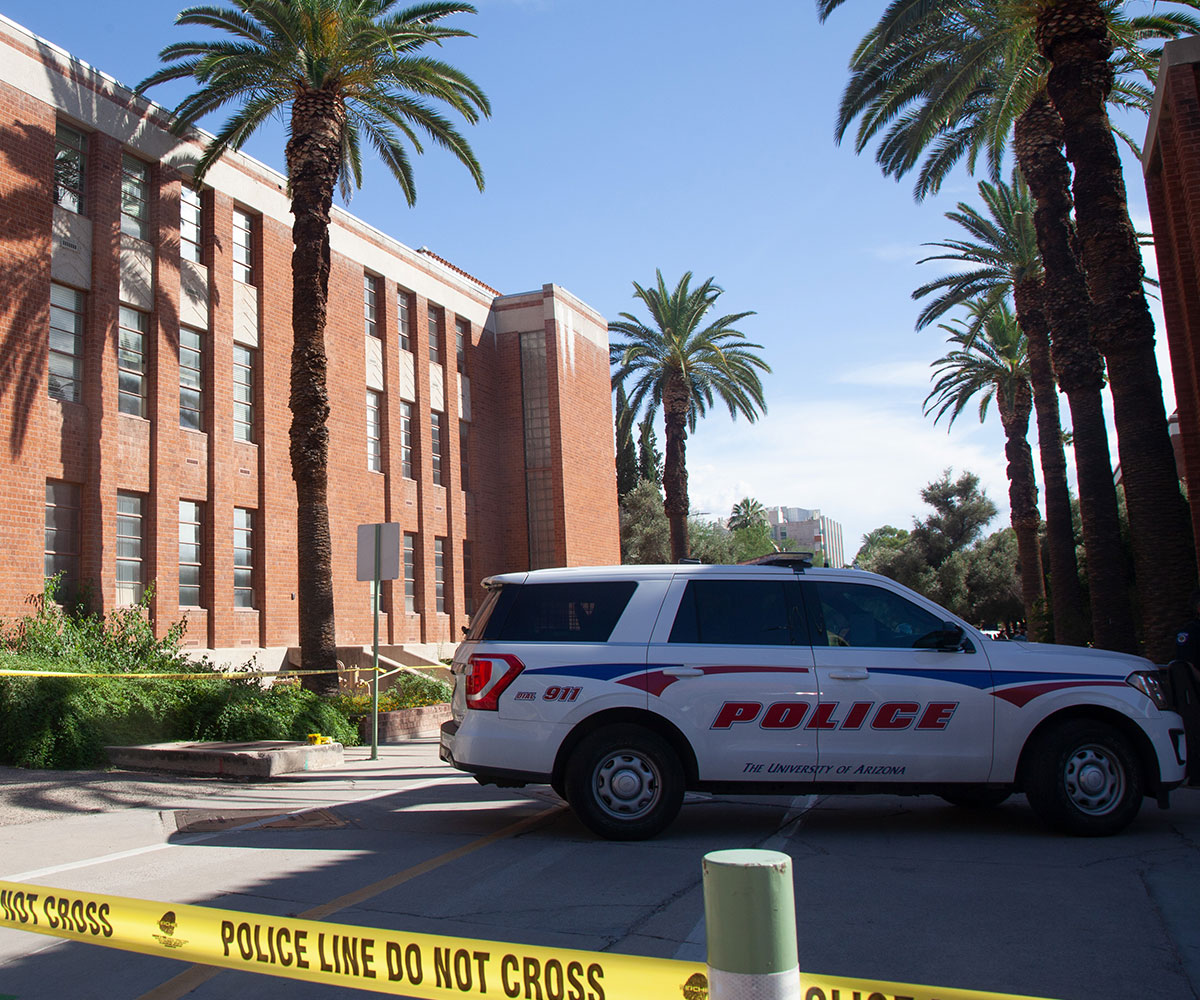The University of Arizona released a campus safety and security report that outlines a series of failures that ultimately led to the Oct. 2022 fatal shooting of professor Thomas Meixner, according to UA President Robert Robbins.
During a March 27 press conference to address the findings and answer media questions, Robbins said the report “reveals there were systemic issues across our university that should have been identified and corrected,” reports The Tucson Sentinel. Dr. Thomas Meixner, professor and head of the school’s department of hydrology and atmospheric sciences, was shot by a former student on Oct. 5. Meixner was taken to a local hospital immediately after the shooting where he was pronounced deceased.
The suspect, 46-year-old Murad Dervish, fled the scene but was apprehended several hours later by the Arizona Department of Public Safety. Dervish, who campus officials knew had a violent criminal record and was barred from the campus beginning in early 2022, had been sending Meixner and others distressing messages for months, reports Tucson.com. The victims made several attempts to report his behavior to numerous university departments, including the Office of General Counsel, the UA Police Department (UAPD) the Office of Institutional Equity, and the Dean of Students.
The new report, written by security consulting firm PAX Group following an independent review of the weeks and months leading up to the shooting, as well as the university’s response in its aftermath, identified three main themes as being in need of improvement, including: 1) Understanding and managing threats; 2) Providing a consistent, empathetic and compassionate response; and 3) The decentralization and breakdown of communications. It also outlines four main areas of failure across multiple departments, including the Threat Assessment Management Team, Crisis Response, the UA Police Department, and Communications.
Threat Assessment, Management Team Failures
The report found the Threat Assessment Management Team (TATM) was run inefficiently, leading to multiple opportunities for the shooter to continue to harass and threaten UA community members, according to The Daily Wildcat. It also led to organizational stress on administrative entities such as the Dean of Students and the Office of the General Counsel. The TATM did not have a full-time leader, dedicated support, or formalized meetings and reviews. UAPD and the Dean of Students were both responsible for leading the TAMT but neither department was equipped to effectively assess and manage threats along with other departmental duties, the report found.
Crisis Response Failures
Failures were also found in the school’s crisis response, determining drills and emergency training was not prioritized by senior leadership, and Emergency Response Plans for each department were encouraged but not mandated by senior leadership. Emergency response was found to be inconsistent across departments, further fracturing responses to threats and harassment. There were also inconsistencies in the understanding of risk, what is considered to be a threat, and what should be deemed concerning.
“Without consistent, dedicated crisis response, the University is forced to move from crisis to crisis, which results in overwhelmed assessment and response teams and continued misunderstandings between involved parties,” the report reads.
UA Police Department Failures
The report also outlines many faults in law enforcement’s response to the shooter’s behavior before the attack, finding there were “multiple missed opportunities by UAPD to engage, disrupt, or arrest [Dervish] prior to the incident.” It identified multiple violations of the terms of the shooter’s expulsion that could have resulted in his arrest, including trespassing on campus and messaging faculty members.
The report further identified a disconnect between the Tucson Police Department and UAPD. Prior to the shooting, Tucson Police received a tip from a handgun dealer who refused to sell Dervish a gun because he said he was going to use it to kill himself and others. UAPD did not know of the tip until after Meixner’s murder. Additionally, the report found the Pima County Constables’ Office failed to serve Dervish with an order of protection filed by a faculty member.
Emergency Communication Failures
The report identified flaws in how the school communicates internally and with the community, including issues with the UAlert system. Many students and staff did not receive alerts following the shooting due to subscription errors. PAX Group noted that within the university’s email system, “mass emails are often identified as spam on the university’s server,” resulting in a “5-15 minute buffer or delay before the system could identify the mass UAlert email as not spam.” At the press conference, Robbins said he was in Washington, D.C. during the shooting and did not receive an alert himself due to issues with his subscription.“I didn’t renew [the UAlert subscription] in a timely manner so I was eliminated from the list,” he said.
Following the shooting, UA Chief of Police Paula Balafas said the incident was something “you can’t even predict,” indicating she was not properly informed of the complaints against the shooter and the multiple violations of his expulsion. The report indicated her statement “angered those who had been asked UAPD to arrest the Subject for nearly one year.”
The report also lists 33 recommendations for improving campus safety, including a dedicated president of the TATM, expanding safety training to individuals and units, automatically registering all students and staff to receive campus alerts, improved interagency cooperation, a centralized security camera policy, installing fire and safety-compliant locks on classroom doors, expanding keyless access to buildings, and running criminal background checks on graduate students.
The UA will also enlist former FBI agent Steve Patterson as an interim chief safety officer, create a commission devoted to campus safety, and create a campus-wide master facility safety plan with support from PAX Group.
“I am angry at myself that I did not do more to prevent this tragedy,” Robbins said during the press conference. “I’m determined to honor Tom Meixner’s legacy by making any and all necessary changes to keep our campus safer.”
On the same day as Robbins’ press conference, the UA Faculty Senate voted 29-13 to approve a written motion against Robbins, as well as Balafas, Chief Financial Officer Lisa Rulney, General Counsel Laura Todd Johnson, Dean of Students Kendal Washington White, and Provost Liesl Folks.
On March 24, lawyers representing Meixner’s family filed a notice of claim with the Arizona Board of Regents, arguing UA “sacrificed Professor Tom Meixner’s life, repeatedly ignoring the clear and present danger of a hostile and dangerous student who openly advertised his intent to murder,” according to The Tucson Sentinel. The lawsuit will seek $9 million.
Article Source: https://www.campussafetymagazine.com/university/university-of-arizona-report-outlines-failures-surrounding-fatal-shooting-of-professor/
Photo Credit: Arizona Public Media

